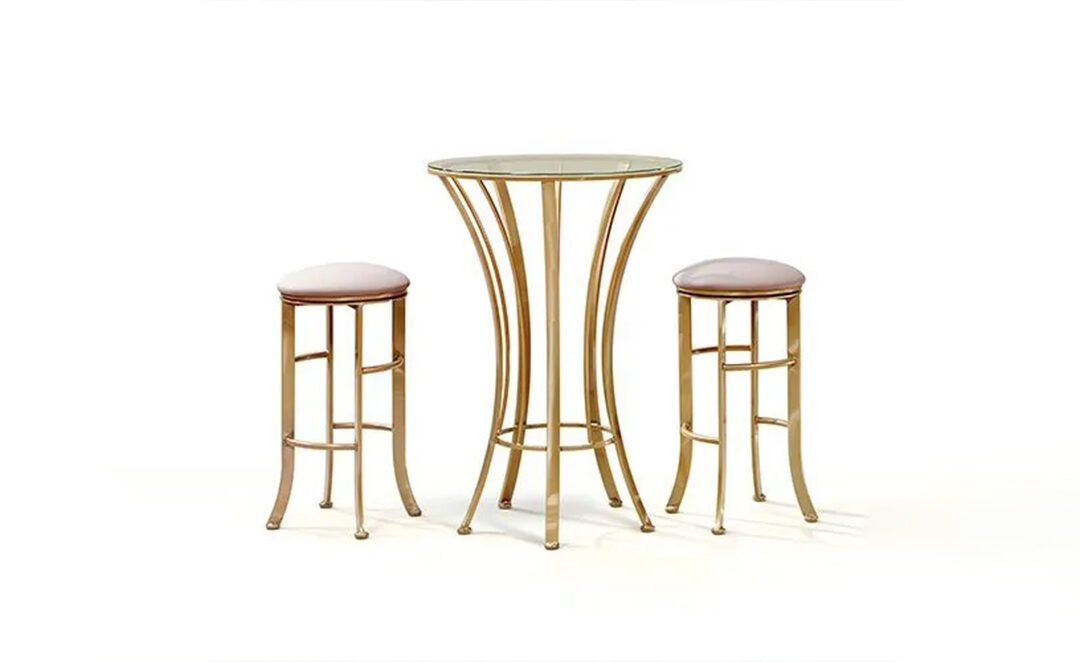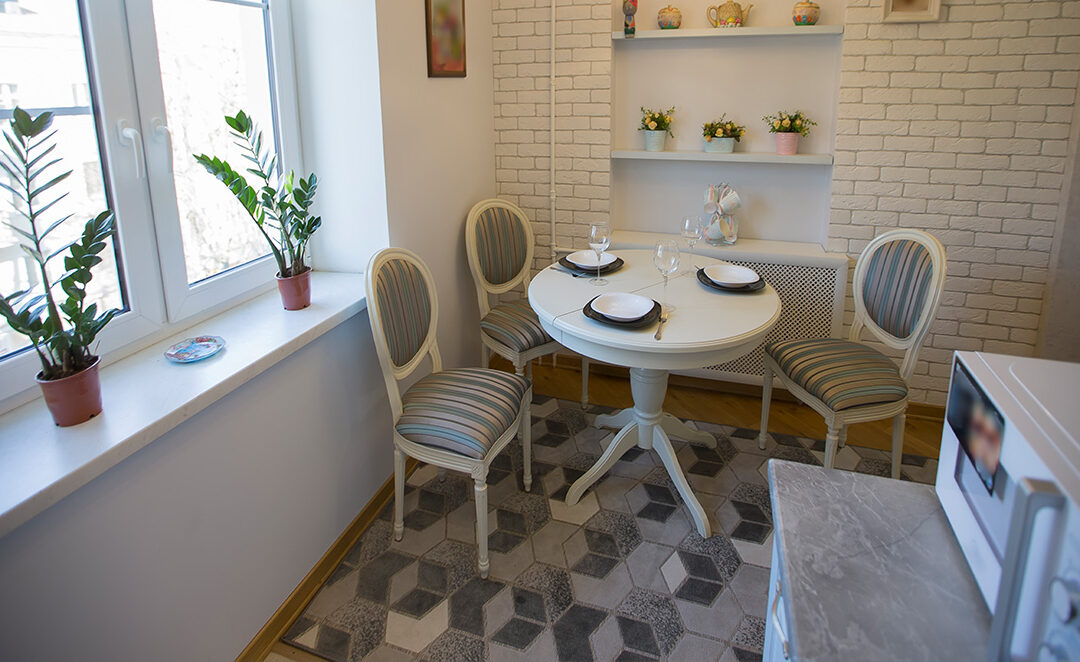Dining rooms may seem like a one-trick pony. It is in the name, isn’t it, you are there just to dine? More often than not, these rooms serve several purposes and can be the central hub or the showpiece of our homes. That is why it is vital to give their design proper care.
The Ultimate Guide to Furnishing and Decorating Your Dining Room
When designing and furnishing the dining room, it is just as important to keep in mind precisely what functions it needs to fulfill as it is having it be a beautiful show stopper. Below we will walk through a few steps that will ensure you get a room tailored not only to your style but unique needs.
Whether you are starting from scratch or doing a redesign, keep the following steps in mind:
- Determine room layout and furniture size restraints
- Pick a style you like that compliments your personality and home
- Make your furniture selections
- Prep your dining room for furniture delivery
- Add the decoration and finishing touches
Taking the time from the beginning to evaluate your vision and the practical demands on a dining space can get you the perfect match of form and function.
Layout and Design Aesthetic
Before you make any purchases for your new dining room, take the time to determine what you have to work with. Not all spaces are created equal, and the amount of floor and wall space available may be a more significant guide than you think to what your final room will be.
1. Room Layout
Your floor plan will be the biggest limiter of furniture and placement options. It is a dining room, so you know you will need at least a table and chairs. But what if you have a hutch or serving table that needs to fit as well? Time to get a tape measure and a pad of paper!
Note down the general dimensions of the room, where windows, doors, and outlets sit. Locations of these static features will have the largest impact on furniture and decor placement. You don’t want a massive hutch awkwardly blocking part of a window, and that server might be better near an outlet where you can plug in warming trays for hosting.
Also, consider what your dining room is frequently used for besides meals. If it is a central multi-purpose room that sees a lot of activity, plan to have more space around the table itself to move. Whether it is crafts, schoolwork, or a formal dinner, knocking into chairs or each other is never fun, especially if you are carrying a hot dish.
A good rule of thumb is to leave three feet of space around the table. Remember to consider the depth of serving tables or hutches when calculating the size of the table to get.
If you have an open floor plan, you probably have a good chunk of space to work with on at least two sides of the table. But for more enclosed dining rooms you need to pass through, make sure you have clear walkways between doors.
Once you have figured out the size of furniture and general layout you think would work best for the space, you can move on to the design aspects.
2. Cohesive Style
If you have gotten to this point, you may have an idea of your perfect dining room design. Dining rooms in open or semi-open floor plans tend to draw design inspiration from the room around them. Modern, industrial aesthetics will look sharply out of place if dropped into a farmhouse atmosphere. In these cases, use subtle design shifts in decor to make the space seem separate and unique.
For entirely self-contained rooms, well, the sky’s the limit. Unlike kitchen and living rooms, the dining room doesn’t need electronics or appliances that might limit design choices.
So whether you want a sleek and modern or a cozy cottage feel, if you want an aesthetic, you can do it.
Pick through magazines or websites and start a board of ideas and styles that you like. You might not be able to recreate it one-to-one in your own space. But keeping in mind furniture materials, color palettes, and textures when making your purchases will help the final dining room be more cohesive.
Picking the Furniture
Deciding on what furniture to purchase or use is the most significant decision in creating the dining room of your dreams. These are the big-ticket items that will likely be with you for years. So make sure they fit your space and style.
1. Dining Table
The dining table is likely to be the most straightforward choice you get. Whether you go with a standard rectangular wood top, modern metal with glass, or a custom river table with wood and resin, you just need it to fit the space and with your desired style. While you might feel overwhelmed by the number of options available on the market, keep in mind your work from the design stage.
Narrow your tables down for the size and materials you wanted from the start. Oval and round tables work better in small rooms where you need more walking space. But they come with the trade-off of seating fewer people.
If you are going for a minimalist style, you might not want a lot of extra decorations. Your table itself should be the statement piece of the room. However, if you have a lot to display, plan to have runners and table settings out regularly, or do children’s crafts, skip the fancy tabletop if you won’t see it much.
2. Chairs
The dining chairs will be your first chance to begin pulling in a little bit more of the aesthetic. Upholstery is your chance to bring in color, texture, and design motifs. Even simple wood or metal chairs set the tone of the space.
Make sure not to overcrowd the table. A comfortable place setting requires about two feet of space per person when using chairs.
If you find yourself with a seating crunch when it comes to your table, i.e., you need to fit more people than chairs would typically allow, a great option is a bench.
Benches enable more people to sit along one side and can add some hidden storage depending on the style. For rooms with significant windows, shifting the table to place a bench directly underneath can free up limited floor space.
3. Hutches, Servers, and More
Serving tables and hutches are as practical an addition to a dining room as they are a style choice. Cabinets, etageres, and serving tables come in a myriad of aesthetics. The three key things to keep in mind are what you need to store, what space you have available, and what you decide for the dining table and chairs.
To keep a cohesive style, you will likely want to keep to the same construction materials and color scheme as your table and chair set. Closed-door styles are a great choice if you need to stow away spare table linens or trays. But if you have dishes or art to display, consider open or glass-doored pieces that will keep precious items safe and dust-free.
Dining rooms sometimes end up with the best lighting in the house. For those of us who use them for more than eating or hosting parties, consider a few more unique furniture options. Bookcases and a desk at a window can turn the space into a great study, work office, or sewing room. And adding in a sofa or comfy side chairs can allow it to function as a den or sitting room.
Final Touches
Once you have selected your core furniture pieces, it is time to accent those pieces and pull the room’s design together. While some styling happens after furniture is delivered, certain items are a good idea to tackle before furniture placement. Either way, this is the time for those inspirational images you saved from the beginning to shine.
1. Walls and Art
Before you get your hutches and serving tables placed, now is a great time to give your bare walls a good once over. A fresh coat of paint can update the look and feel of any room. And accent walls are a fantastic way to make any room feel exceptional.
Whether it is a simple pattern, fun wallpaper, or reclaimed wood, a single wall can make a statement and pull together the desired aesthetic.
The space between the furniture and the windows also tells you what area you have available for mirrors or art. Adding a large mirror can make a small room feel larger than it is. And there really is no limit to the styles of art available. You can choose options from a modern abstract piece, a pastoral farm scene, or a family heirloom that is truly yours.
2. Accessorize
It is the small things that make a house home. Even a simplistic modern design requires a few detailed pieces for everything to come together. Place settings and table decorations can lend a room a more formal style. Vases and bowls are fantastic options as you can change their contents for different events, seasons, or holidays.
Windows give you a chance to add more color to a room with curtains or an organic touch with nearby plants. And the shelving and furniture you’ve picked is just as perfect a spot to display fine china as it is your selection for game night.
Don’t be afraid of color or texture as you decorate the space, but look to accent your core pieces.
3. Floor to Ceiling
Furniture, walls, and decor will draw your eyes first, but don’t forget the top and bottom of the room. Pendant styles and chandeliers add a little extra flair for lighting, while recessed ceiling lights will let other decorations or furniture firmly hold the spotlight.
Just make sure anything hanging over the table allows space above for handing items across. At least three feet above the table will keep you from constantly knocking into lights. If you think the table might get moved in the future, consider a light fixture with an adjustable height.
While discussing flexible lightning options, think about the utility of installing a dimmable light. You can have brightness when needed if your family uses the table for schoolwork but will be able to dim it for more comfortable hosting and dining.
Finally, look to the floor. Hardwoods and solid surfaces will keep the room easy to clean in the event of a spill. But a rug can be an excellent way to round out your room design and add a little bit of comfort to what is often the most austere room in the home.
When selecting a rug, choose a style that complements other textiles and colors. Since spilled food or drink is inevitable, look for washable area rugs. And make sure any rug you decide on is large enough that it won’t be a tripping hazard by constantly catching shifting chairs.
Where Function Meets Art
If you keep in mind your room’s space, needed function, and general design, you are sure to get a great-looking space that is as useful as it is inviting. For over 40 years, Johnston Casuals has designed and created beautiful and functional furniture. If you have your heart set on a modern dining area, browse our catalog of handmade metal furniture.
Our pieces are made to order by master craftsmen in Wilkesboro, NC. From tables and chairs to shelves, we pride ourselves on furniture that will last a lifetime. We work with dealers all over the US to deliver the highest quality furniture to the public. Our handmade attention to detail sets us apart from any other designer and manufacturer around.
If you are a business or interior designer looking for a truly custom project, contact our design team to get started today.




